Volumen 28 2013
EL SINDICALISMO “LIBRE” Y EL MOVIMIENTO SINDICAL ARGENTINO DESDE MEDIADOS DE LOS AÑOS ´40 A MEDIADOS DE LOS AÑOS ´50
Victoria Basualdo
Resumen
Este artículo analiza algunos hitos centrales de la relación entre el movimiento sindical argentino y el sindicalismo “libre” entre mediados de los años ´40 y mediados de los años ´50. Se centra en dos momentos de esta historia. En primer lugar, analiza una serie de caracterizaciones y tensiones previas a la fundación de la CIOSL y la ORIT entre el sindicalismo “libre”, la CGT y el gobierno argentino que condicionaron muy fuertemente la relación entre ellos. Este primer apartado se detiene especialmente en figuras que jugaron un papel protagónico, y en una serie de incidentes y confrontaciones que forjaron una caracterización del peronismo como una “dictadura” y a la CGT como “un brazo político del gobierno”. En segundo lugar, sostiene que luego de la conformación de la CIOSL en 1949 y la ORIT en 1951, se profundizó esta confrontación cuando el posicionamiento geopolítico denominado “tercera posición” por parte del gobierno peronista promovió la conformación en 1952 del Comité de Unidad Sindical Latinoamericana (CUSLA) y luego de la Asociación de Trabajadores Latinoamericanos Sindicalistas (ATLAS). Estos fueron hitos muy importantes en las relaciones sindicales en la región que terminaron de marcar la relación de confrontación y rivalidad entre la CIOSL y ORIT y sectores mayoritarios del movimiento sindical argentino. Finalmente, el trabajo proporciona algunos elementos interpretativos que contribuyen a comprender algunas de las causas posibles de esta relación conflictiva entre el sindicalismo argentino y el sindicalismo “libre” en esta etapa.
Palabras clave: Historia De La CIOSL-ORIT, Relaciones Internacionales del Sindicalismo Argentino, Movimiento Sindical Durante La Década Peronista.Abstract
This article analyzes some key moments of the relationship between the Argentine labor movement and the free tradeunion movement, from the mid-1940s to the mid-1950s. It focuses on two main sub-periods of this history. First, it analyzes a series of conflicts and characterizations previous to the foundation of the ICFTU and ORIT between the CGT, the Argentine government and the free trade-union movement. It takes into account some leading figures and important incidents and confrontations that resulted in the characterization of Peronism as a “dictatorship” and of the CGT as a “government’s political branch.” Second, it contends that after the ICFTU and ORIT were founded in 1949 and in 1951 respectively, this confrontation deepened, particularly in 1952, when the Argentine government promoted the creation of the Comité de Unidad Sindical Latinoamericana (CUSLA) and later the Asociación de Trabajadores Latinoamericanos Sindicalistas (ATLAS). These initiatives were very important landmarks and fostered the confrontation and tension between the ICFTU and ORIT and the majority of the Argentine labor movement, even after the 1955 coup d’état that overthrew Perón in 1955. Lastly, the article presents some elements that contribuye to understand some of the possible causes of this conflictive relationship.
Key words: history of ICFTU-ORIT, International relations of the Argentine labor movement, Argentine unions under Perón´s first two governments.
Tweet

